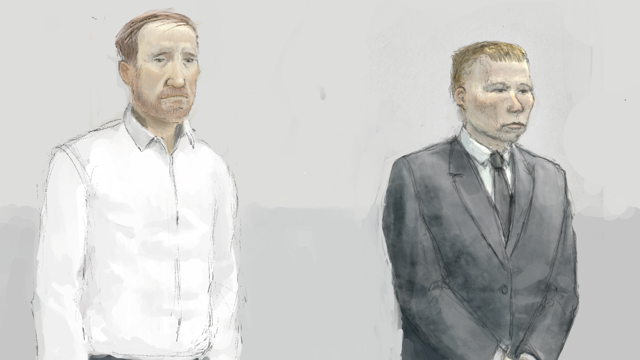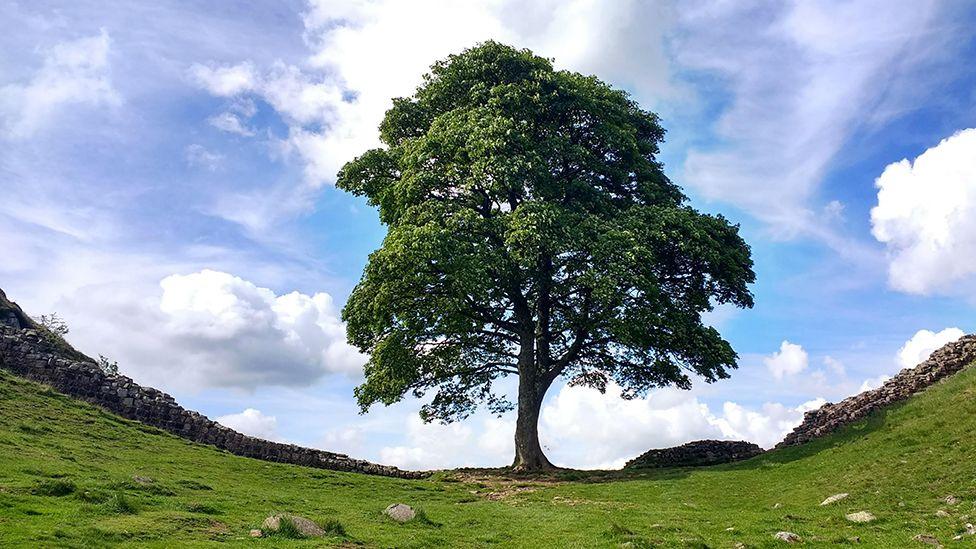Meet the man who sketched the Sycamore Gap trial
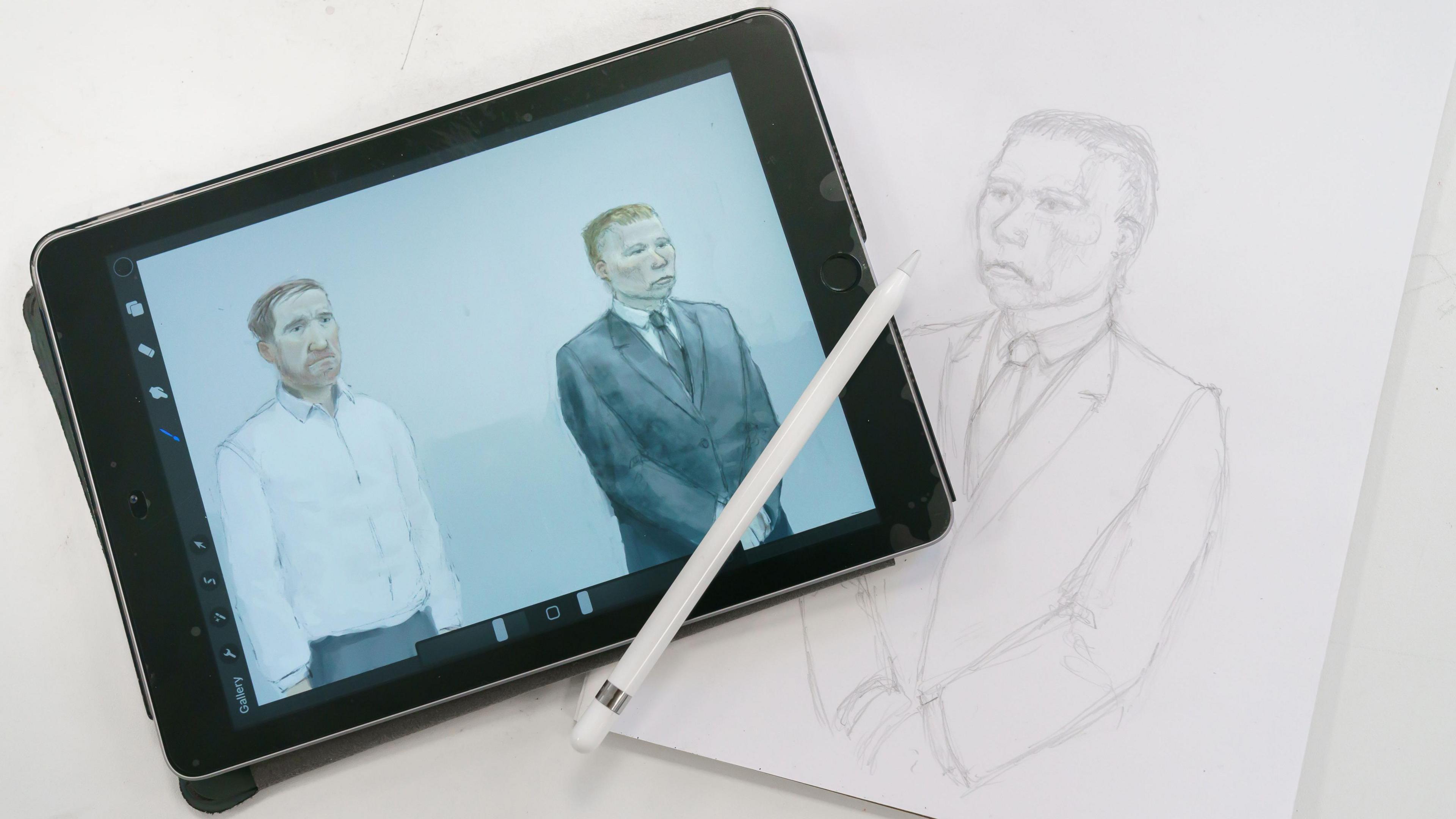
Nick Lewis's sketches gave many their first glimpse of the Sycamore Gap duo's faces
- Published
The trial of two men who chopped down the much-loved and world famous Sycamore Gap tree garnered global attention. With cameras not allowed in court, Nick Lewis's sketches of proceedings were used by many media, including the BBC. How did he do it?
The two-week trial that gripped the nation was Nick's first foray into the law courts.
He became a regular visitor to courtroom one at Newcastle Crown Court as prosecutors proved Daniel Graham and Adam Carruthers illegally felled the sycamore tree that had stood in a dip on Hadrian's Wall for more than 100 years.
The sketches the 50-year-old made of the defendants in the dock, barristers and judge quickly became invaluable to journalists reporting on the trial and for the vast majority of the public was the first time they had seen the accused pair's faces.
"It was fascinating," Nick, a senior lecturer in illustration at the University of Sunderland, says.
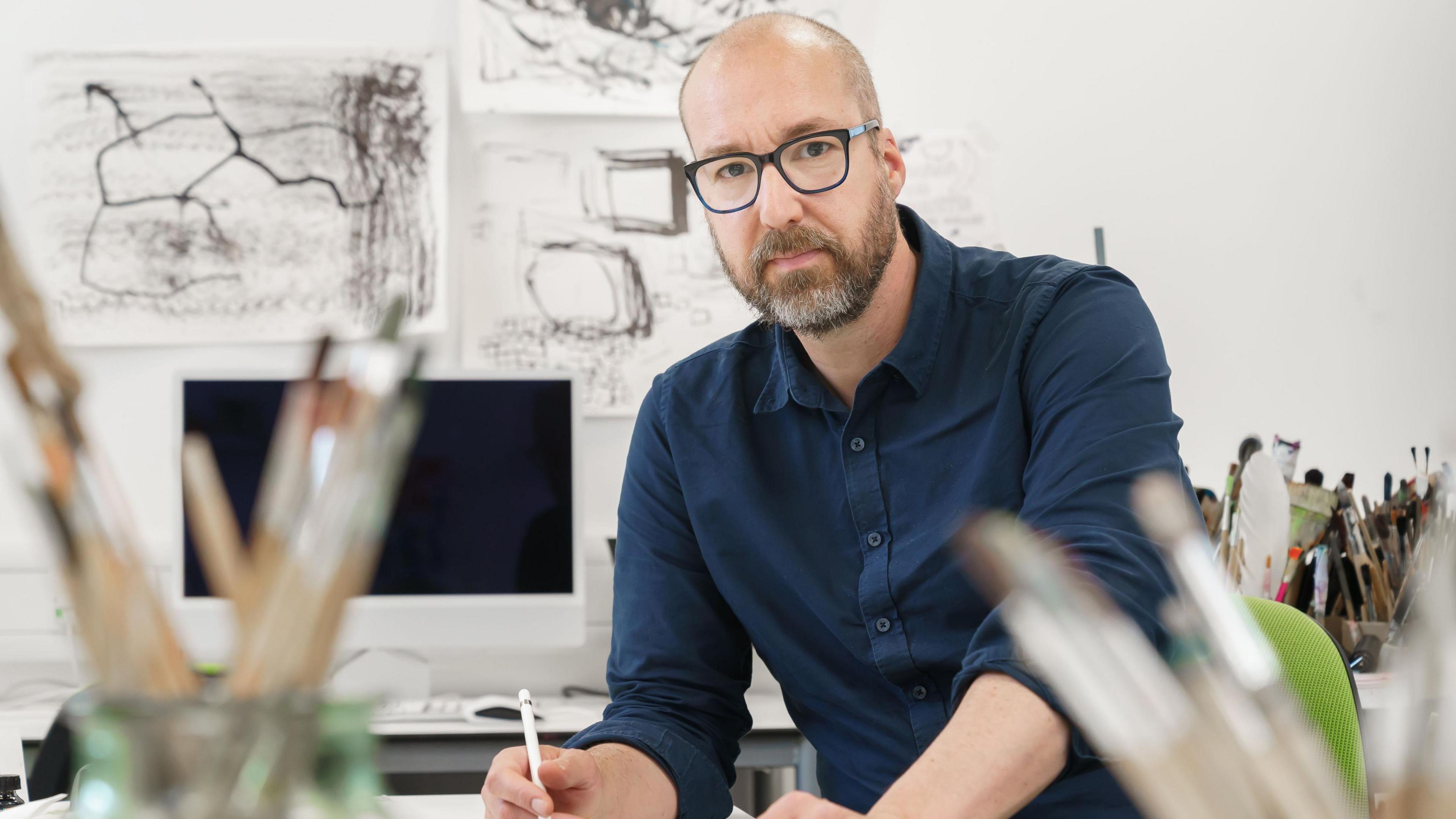
Nick Lewis is Senior Lecturer in Illustration, Animation and Games Art at the University of Sunderland
Under strictly enforced rules, external, people are not permitted to take photographs in courts, to do so can and has led to imprisonment.
To provide illustration for articles and news reports, sketch artists are often deployed, but they are not actually allowed to make their drawings in the courtroom.
They have to dash out of the building and rely on their memory to produce their work for the baying media mobs.
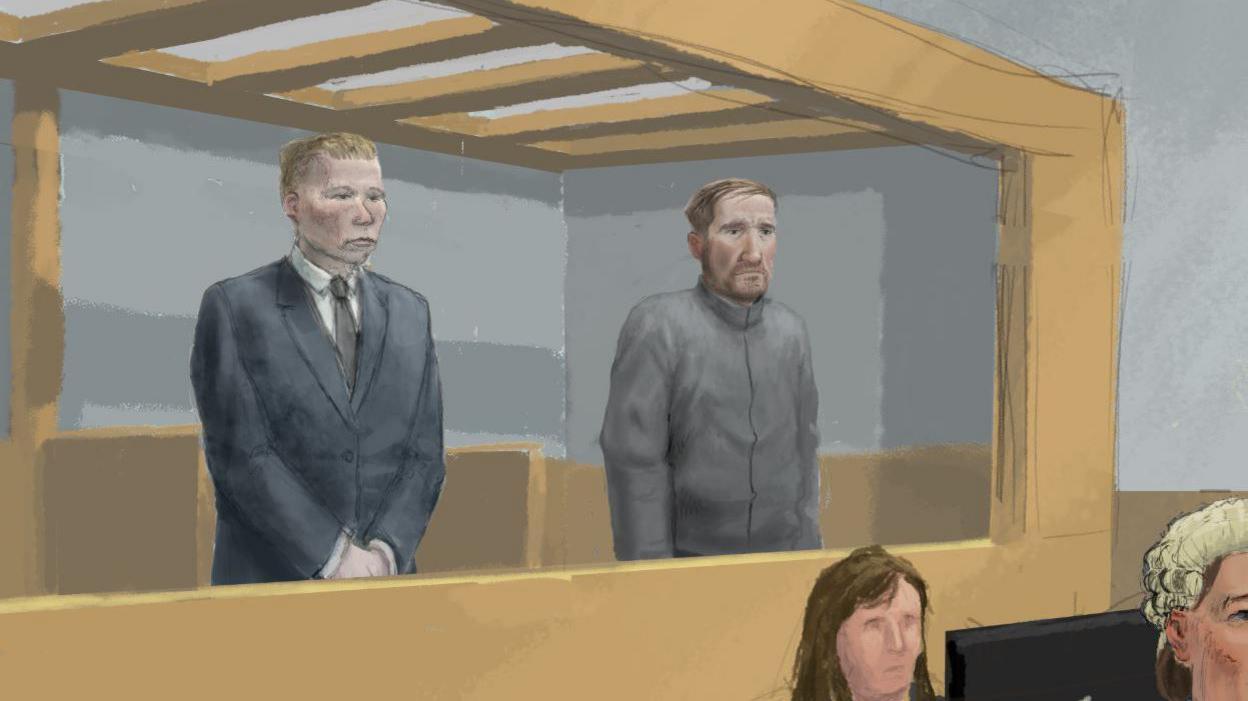
Adam Carruthers and Daniel Graham will be sentenced in July
"In a world where everything is photographed, it's very rare that you have a situation where you can only rely on a drawing," Nick says.
"In the world of news that is instant and visual all the time, it makes it very challenging and interesting."
Nick illustrated the case since the very earliest hearings, making him one of the first to capture a likeness of Carruthers, who like Graham, attended early proceedings wearing a mask totally obscuring his face.
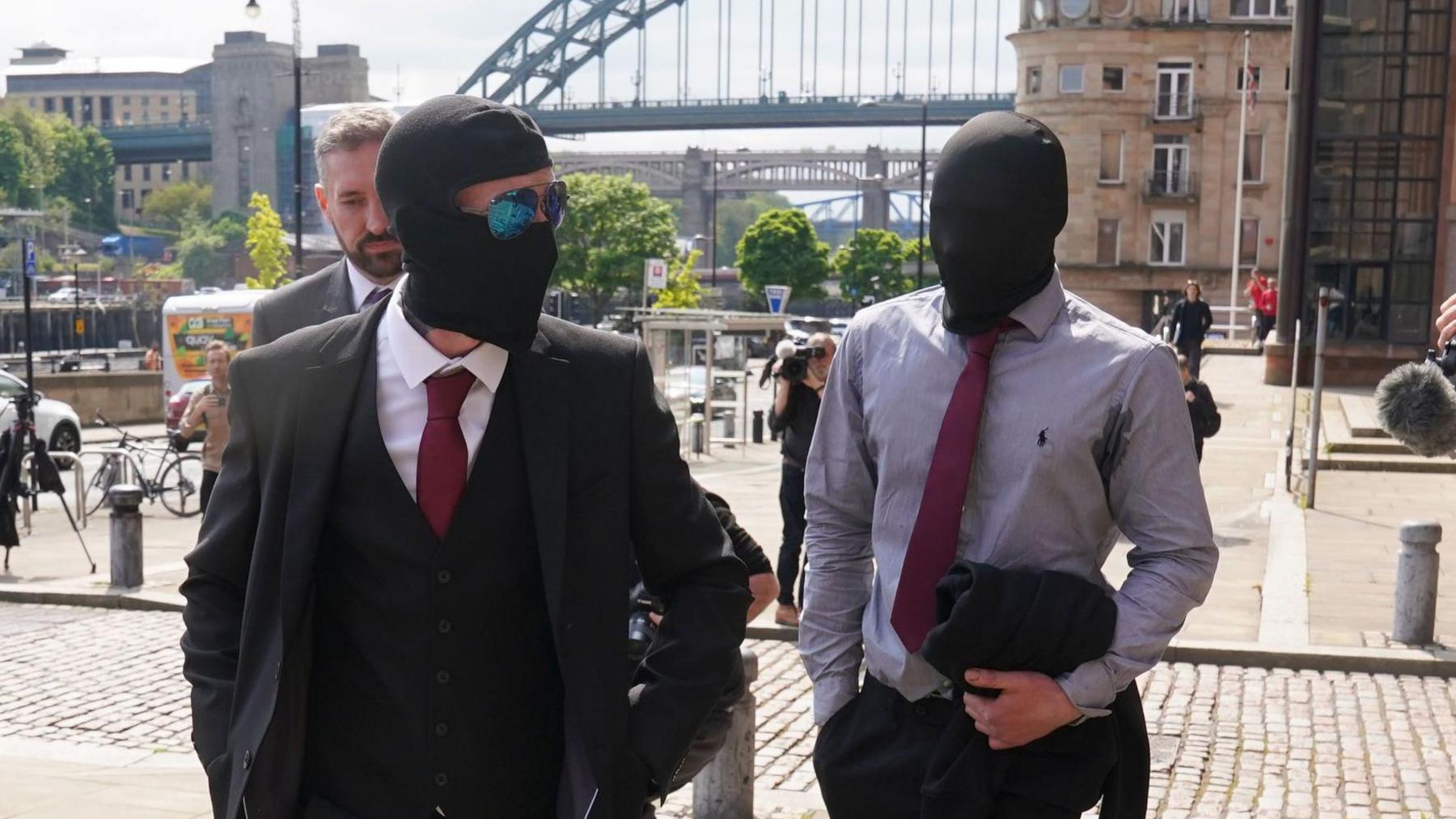
Daniel Graham and Adam Carruthers covered their faces at previous hearings
The Sycamore Gap - From Roots to Ruin
A single tree, growing in a natural dip along Hadrian's Wall in Northumberland, is destroyed overnight, and a community is left reeling. Who chopped down the tree at Sycamore Gap and why?
"It was very difficult, there was nobody who had any pictures online of him at the time, so I had to draw him without any references," Nick says of Carruthers.
Sitting on the press benches, Nick made notes about people's features, recording details such as overbites and cheekbones, any similarities to celebrities perhaps, before leaving court and heading to a nearby cafe or library where he could draw in earnest.
He started with a quick sketch, using pencil and paper, before moving to his iPad, with each work taking about an hour and a half to produce.
"At first it was nerve-wracking, I wasn't sure what the procedures were, but the court staff were so helpful so by the end of the case, I got used to it," he says.
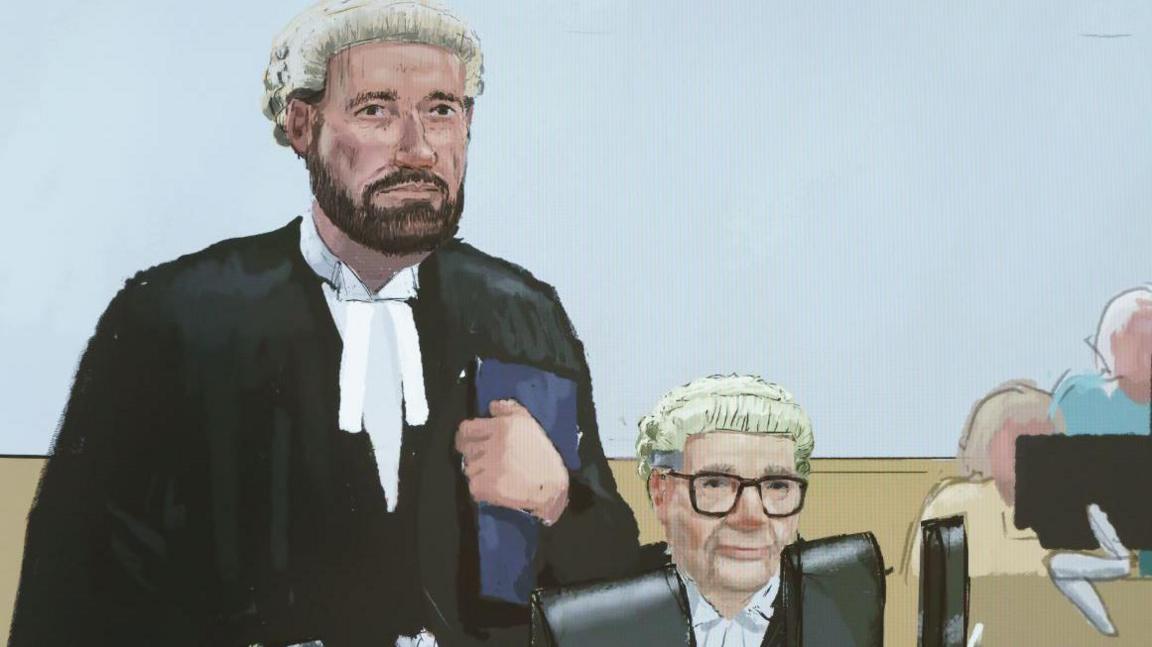
Nick drew multiple people involved in the trial including the defendants' barristers Andrew Gurney and Christopher Knox
He had always had an interest in court art and wanted to see if it was something he was actually able to do.
Nick chose the Sycamore Gap trial because it had huge public interest.
"Everyone I spoke to was horrified about what happened to the tree."
But, while not downplaying the seriousness of it, there were no victims or grieving families for Nick to have to think about.
Away from the drama of the trial itself, Nick also got to experience the court process.
"It was fascinating seeing the level of rigour and the way people are treated by the staff, who were courteous and having to manage all the parties going in and out," Nick says.
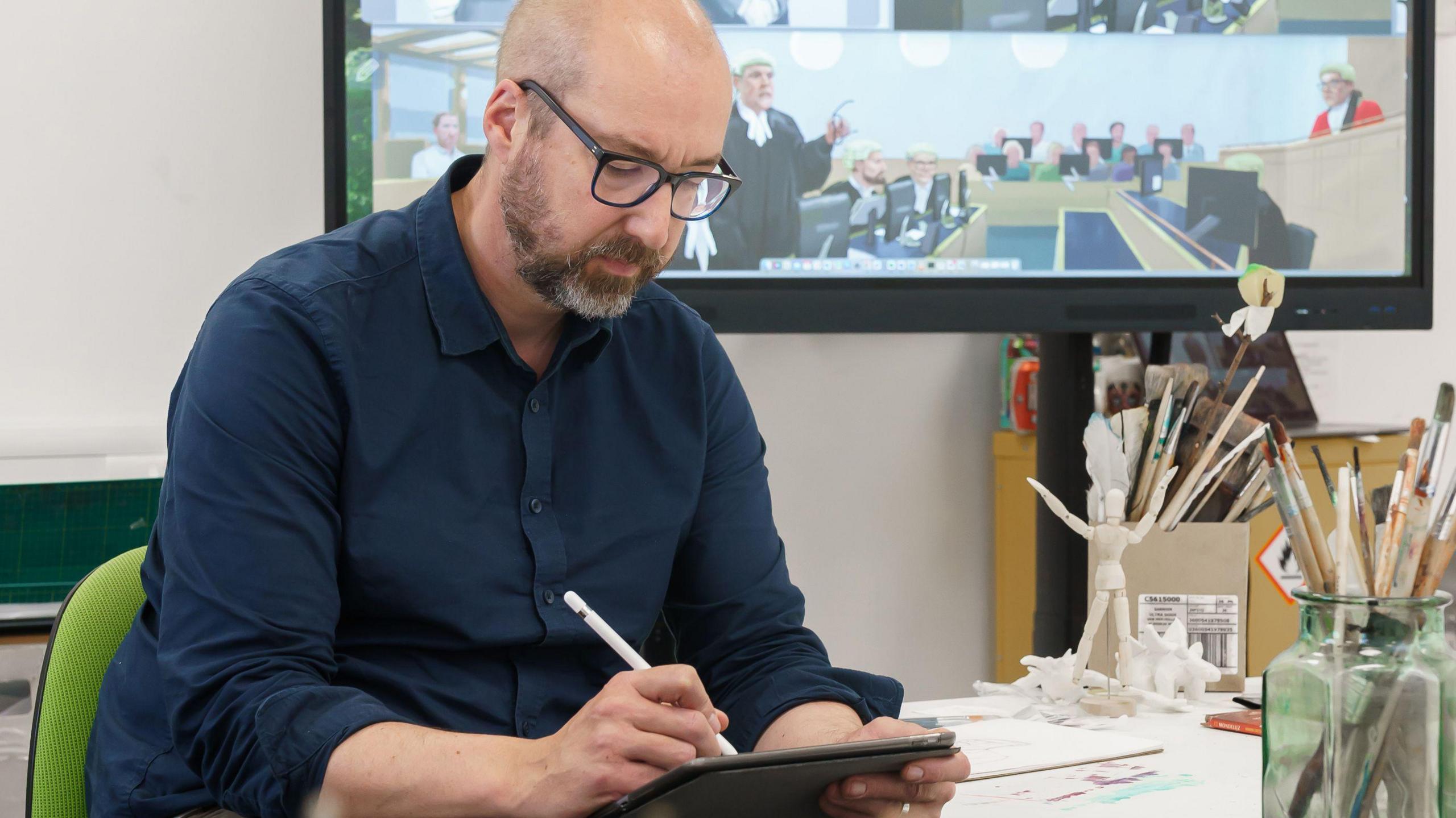
Nick used a combination of pencil and paper and his iPad to create his work
The barristers in their black gowns and wigs were also of interest to Nick, the decorum and court behaviours they demonstrated being a big departure from the outside world.
"When I first started they all looked like the [late] Queen in my drawings," he says. "It took me a few goes before I realised what I was doing wrong.
"Although they all wear wigs they wear them differently, some down over their forehead, others pushed back, and recognising that made the difference."
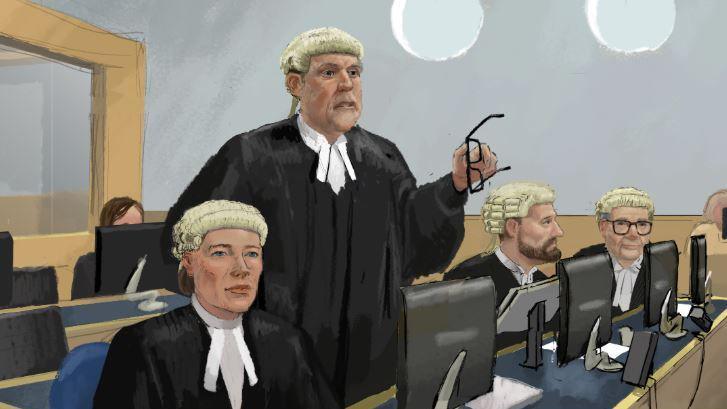
Nick sought to capture the mannerisms of the barristers, such as those of prosecutor Richard Wright KC (standing)
There are responsibilities to covering court though, Nick says. "You have to be mindful that having to go to court is a pivotal point of someone's life.
"You have to make sure you are doing something in the public interest without making theatre of it."
He attended most days of the trial and was constantly revisiting early sketches, easily done on the iPad, to make alterations.
There were technical issues, his stylus pen stopped working and his iPad ran out of battery, while trying to capture a person's likeness is "incredibly difficult", Nick says.
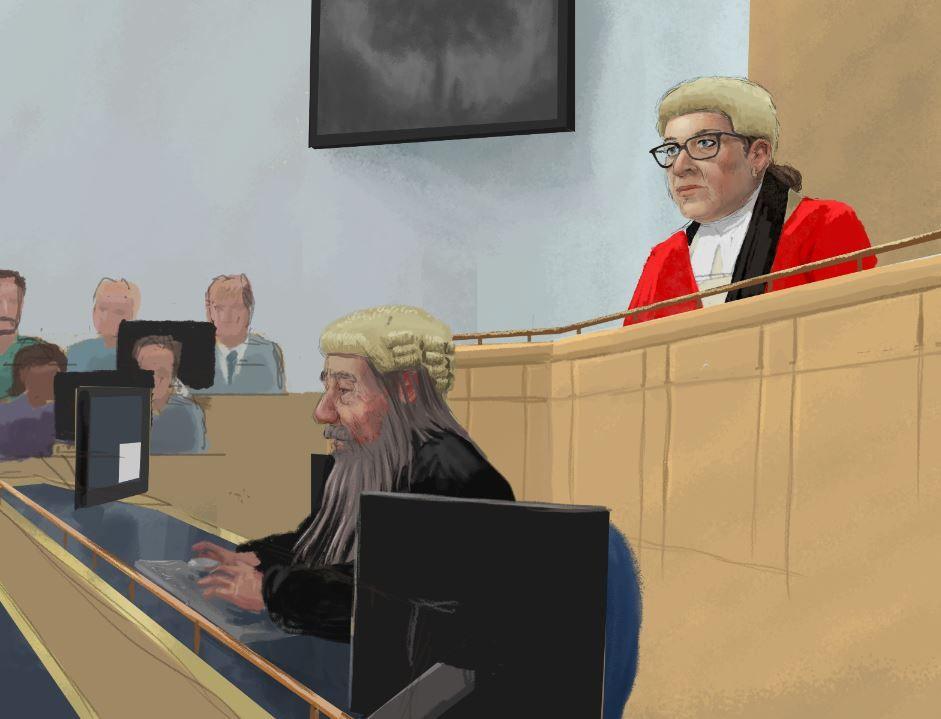
Mrs Justice Lambert presided over the trial, at which jurors were shown footage of the felling
Especially, he adds, if you are doing it from notes and memory and, if there are any reference photos of them, they are probably from different angles than the one you want.
"Sometimes the more you draw someone, the worse it gets," he says. "But you can endlessly tweak on an iPad.
"One of the biggest problems is just leaving it alone."
He is also conscious that these are real subjects, adding: "I don't want people seeing drawings of themselves and thinking I made them look awful or 'too old'."

Nick's sketches were the only pictures of the two men most members of the public saw...
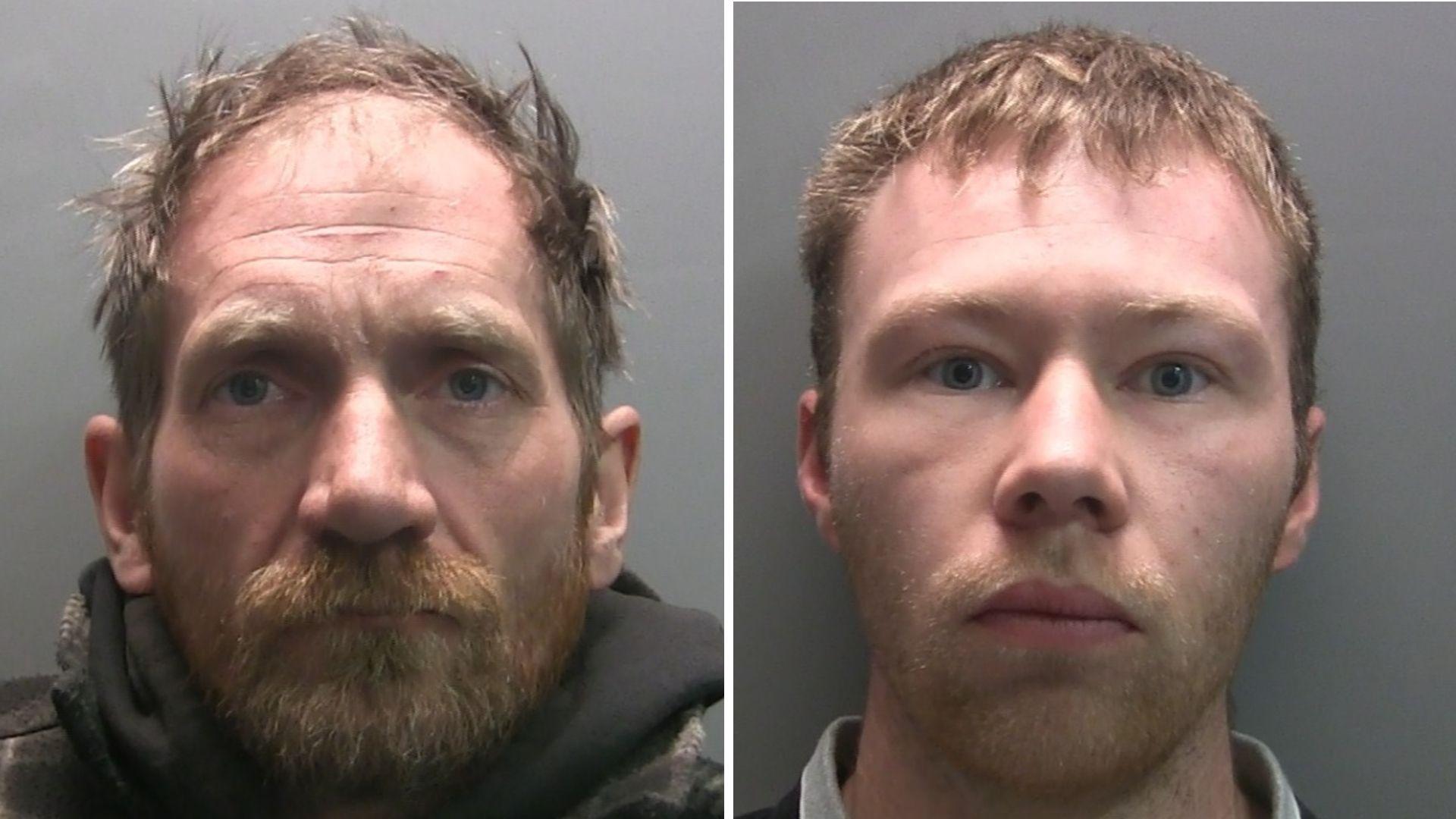
...until their mugshots were released after their conviction
Now Nick is hoping his dalliance with court artistry will inspire other budding artists among his students.
His course is already brimming with all kinds of illustrations, from the medical industry to computer games, and he can now add crime and court art to his curriculum.
He is also looking forward to returning to court in the future to sketch more trials, lecture schedule allowing.
Follow BBC North East on X, external, Facebook, external, Nextdoor and Instagram, external. Send your story ideas here, external.
- Published7 May
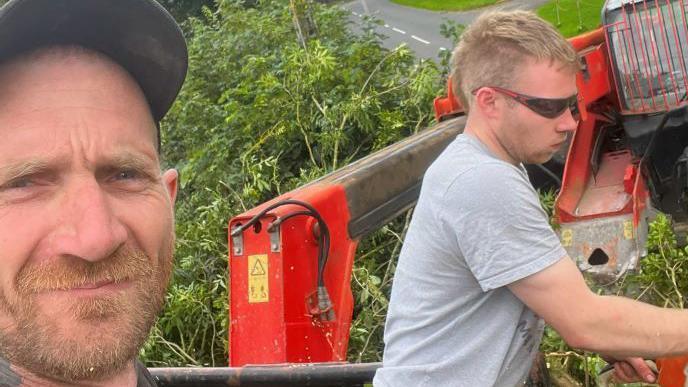
- Published30 April
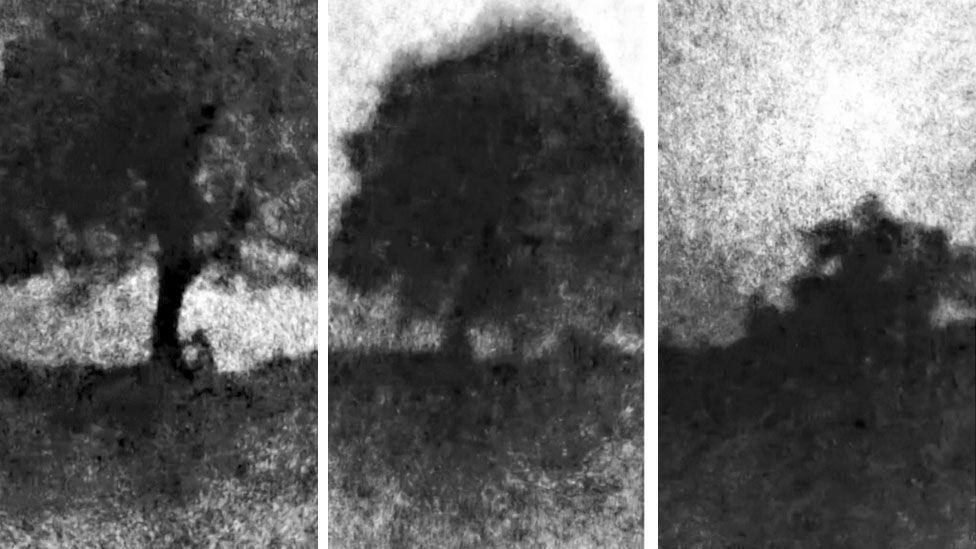
- Published29 April
